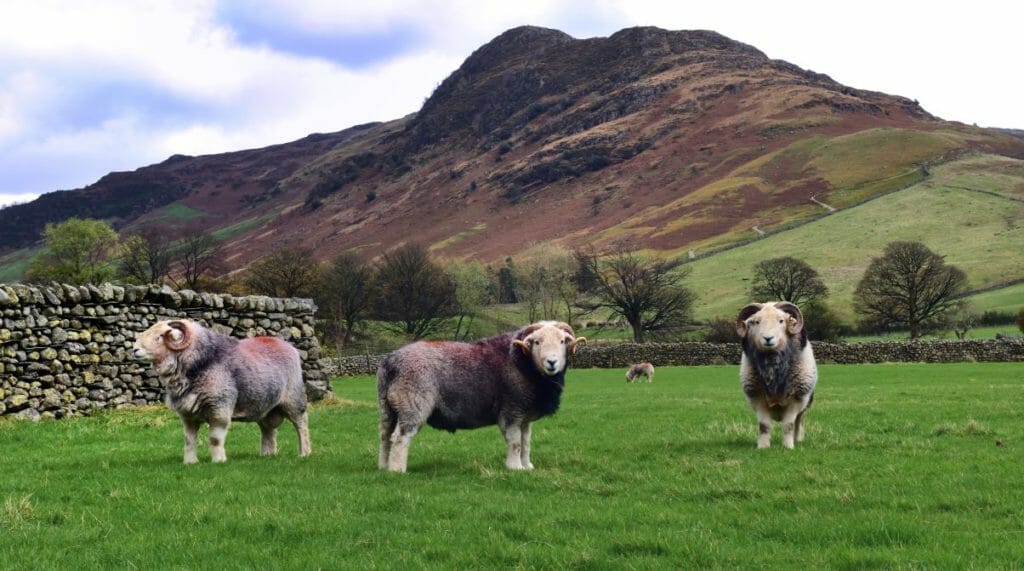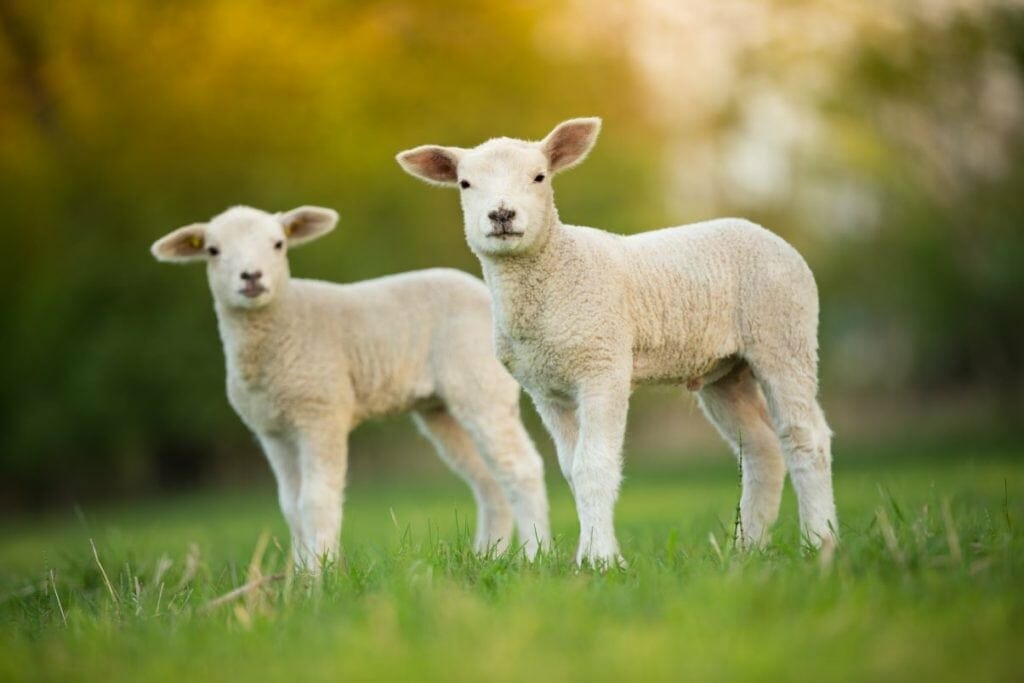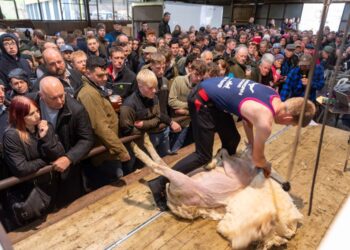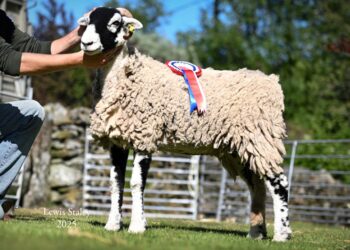
Tips for tip top tups
By Dani Whitford, Rowcliffe House Vets Ltd
It may feel early for some to start thinking about lambing 2022 but remember your 5 Ps (Proper Planning Prevents Poor Performance).
Your tups make up 50 per cent of the breeding flock, so we need to ensure they’re firing on all cylinders in order to get as many ewes in lamb, as quickly as possible.
Tup MOTs should be carried out 10 weeks before tupping, giving you enough time to correct any problems and decide who’s not going to make
the cut this year, so you can plan what and who you might need in advance of the tup sales.
- Toes – check feet, legs and locomotion.
- Teeth – check for gaps, under/overshot jaws and abscesses.
- Testicles – we’re looking for symmetry with no lumps and bumps. The testicles should have the firmness of a flexed bicep and be appropriately large.
- Todger – check the penis is freely movable in the sheath and there are no signs of injury.
- Tone – aim for a body condition score of 3.5-4 out of 5.
- Treat – check vaccines are up to date (Clostridia, Pasteurella, Footrot), parasites and lameness.
- Vet Visits – we can carry out these checks for you and take and examine a semen sample at the same time if necessary. This will flag up problems such as low sperm counts, poor swimmers and infections.
- Vasectomies – “teaser tups” can be used to help bring forward or tighten your lambing period by stimulating the ewes to ovulate.
We can carry out the surgery on farm or at the practice but this needs to be done at least six weeks before turning them out with ewes, so time is of the essence!
A good teaser should be an experienced breeder with a strong libido and should have passed the above MOT checks, as he will be worked hard.
You can use one teaser to 50-100 ewes, but you’ll need to aim for a lower ratio of 20-30 ewes per tup when you put in your breeders to maximise pregnancy rates.
Practice notes
Rowcliffe House Vets Ltd is a traditional mixed practice, offering a 24-hour service to both pets and farm animals.
Our vets are committed to providing a high-quality service and will work with you to improve productivity and promote sustainability of your farm business.
Rowcliffe House Vets Ltd
Crown Square, Penrith, Cumbria CA11 7AB
Tel: 01768 865661
www.rowcliffehousevets.co.uk
The importance of iodine in flock health
by Rachel Tennant Frame, Swift & Partners Veterinary Surgery

Iodine is vital in thyroid hormones, which are crucial for growth and metabolism.
The textbook iodine deficiency involves low levels in ewes in late pregnancy, resulting in the birth of weak thin-woolled lambs.
In practice, I have never seen this occur in Cumbria.
In most cases we diagnose a deficiency on blood samples. It should be noted that measuring the iodine levels is only an indication of current diet
intake, although more extensive testing checking thyroid hormone levels is available.
Diet has a big impact on iodine sufficiency. Grass has low levels, but brassicas (rape and kale) and legumes (turnips and clovers) can reduce uptake of
iodine by the thyroid gland. If these are fed to ewes in late pregnancy, then iodine supplementation may be needed.
Iodine drenches are available, and some trace element boluses have extra iodine added.
There is also the option to import a long acting “depo” injection with can last up to a year.
Practice notes
We are a traditional independent vets’ practice, treating pets, farm animal and equines.
We provide a high standard of care and expertise in a relaxed and friendly environment.
Even when our clinic is closed, one of our vets is always available 24 hours.
The Veterinary Centre
Carleton, Penrith, Cumbria CA11 8TZ
Tel: 01768 862454
www.frameswiftandpartners.co.uk
Contagious Ovine Digital Dermatitis
by Sophie Drake, Tethera Veterinary Services

Contagious Ovine Digital Dermatitis (CODD) is a highly infectious and severe cause of lameness which is thought to be present on around 50 per cent of sheep farms in England.
CODD begins as an area of hair loss or ulceration at the coronary band, which quickly progresses to under-running and separation of the hoof horn towards the toe.
Eventually the hoof capsule is lost leaving the underlying sensitive tissue exposed.
The hoof horn will eventually regrow, however, X-rays show that the bone is permanently distorted, so prompt treatment is important.
Sheep with CODD are often very severely lame (more so than with footrot), however can appear sound in the early stages – meaning that these sheep may not be identified and spread CODD to the rest of the flock.
Bacteria called Treponemes have been identified as the cause – the same species that cause Digital Dermatitis in cattle.
The Treponemes invade the foot via the hair follicles explaining why the problem begins at the coronary band.
Treponemes are very difficult to detect in the environment so it is difficult to know exactly how CODD spreads, but faecal transmission is likely.
By far the biggest risk factor for CODD is buying in disease, so a good quarantine protocol is essential (not just for CODD but also for other diseases).
It is recommended that sheep are quarantined for a minimum of three weeks before they are introduced to the rest of the flock, with footbathing and foot
inspection also advised (if numbers allow).
The bacteria that cause footrot and scald have been found in up to 59 per cent of feet with CODD.
The exact association between the two conditions is unknown, but it would seem that good control of footrot will also help control of CODD.
Treponemes have been found on hoof trimming equipment after trimming sheep and cattle feet.
Ideally, trimmers would be disinfected between animals and wearing gloves would also help to prevent spread.
Hoof trimmings are also packed full of the bacteria so should be disposed of if possible!
Housing is also a risk factor – keeping sheds well bedded will help reduce both CODD and footrot, and it may be worth considering footbathing before housing to reduce spread.
Injectable as well as topical antibiotics are necessary for sheep affected by CODD (because the Treponemes invade deep into the hair follicles).
Contact you vet for advice about which antibiotics to use.
Anti-inflammatories also help to reduce pain associated with the condition.
Practice notes
We are a dedicated independent farm and equine veterinary practice based in Appleby.
Our team of 6 dedicated large animal vets collectively have a wealth of experience which allows us to provide a comprehensive service throughout the Eden Valley and beyond.
Tethera Veterinary Services Limited
Crosscroft Industrial Estate,
Appleby-in-Wesmorland
CA16 6HX
Tel: 017683 51819
www.tetheravets.com































